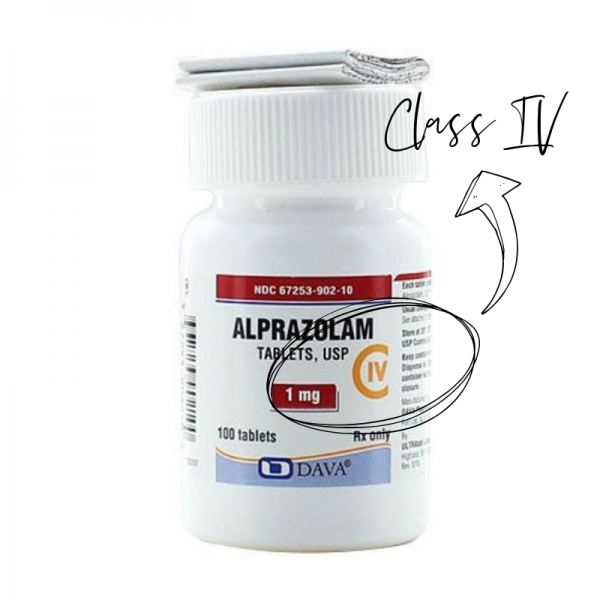All controlled substances are categorized into different classes; Class I through Class V. The Drug Enforcement Administration places substances “in their respective schedules based on whether they have a currently accepted medical use in treatment in the United States, their relative abuse potential, and likelihood of causing dependence when abused.”
The different classes of drugs will have different recordkeeping requirements. The manufacturers are required to notate a large “C” with the corresponding roman numeral to be printed on the packaging and the bottle itself to signal the class.

Substances can change classes so it’s important to monitor controlled substance regulations often. Below you’ll find a list of common veterinary controlled substance classes and their substances.
Class I substances are not included in this list because there are no current medical applications for these substances.
Schedule 1 (I) drugs, substances, or chemicals are defined by the federal government as drugs with no currently accepted medical use and a high potential for abuse. Schedule 1 (I) drugs are the most dangerous drugs of all the drug schedules with potentially severe psychological or physical dependence.
Examples of Schedule (1) I Substances:
- Heroin
- Lysergic acid diethylamide (LSD)
- Marijuana (cannabis)
- Methylenedioxymethamphetamine (ecstasy)
- Methaqualone
Additionally, Class 5 (V) substances are used on a very limited basis in veterinary medicine.
Schedule 5 (V) drugs, substances, or chemicals are defined as drugs with lower potential for abuse than Schedule 4 (IV) and consist of preparations containing limited quantities of certain narcotics. Schedule 5 (V) drugs are generally used for antidiarrheal, antitussive, and analgesic purposes.
Examples of Schedule (5) V Substances:
- Cough preparations with less than 200 milligrams of codeine or per 100 milliliters (Robitussin AC)
- Lomotil
- Motofen
- Lyrica
- Parepectolin​
Controlled Substances & Schedules Information
| Drug Schedules | Definition | Examples |
|---|---|---|
| Schedule II | Substance has high potential for abuse but has currently accepted medical use, with severe restrictions. | Codeine Demerol Duragesic Duramorph Endocet Fentanyl (injectable & patch) Hydrocodone Hydromorphone Morphine Oxycodone Oxymorphone Recuvyra Tussionex |
| Schedule III | Substance has potential for abuse less than schedule I and II drugs and has accepted medical uses | Buprenorphine Ketamine Simbadol Tilzolan |
| Schedule IV | Substance has low potential for abuse relative to drugs in schedule III and has accepted medical uses | Alfaxan Alprazolam Butorphanol Clonazepam Diazepam Lorazepam Midazolam Phenobarbital Tramadol Zolpidem |
| Schedule V | Schedule 5 (V) drugs, substances, or chemicals are defined as drugs with lower potential for abuse than Schedule 4 (IV) and consist of preparations containing limited quantities of certain narcotics. Schedule 5 (V) drugs are generally used for antidiarrheal, antitussive, and analgesic purposes. | Lomotil |
If you are in need of additional assistance with controlled substances within your practice, check out the complete suite of Controlled Substance tools.
